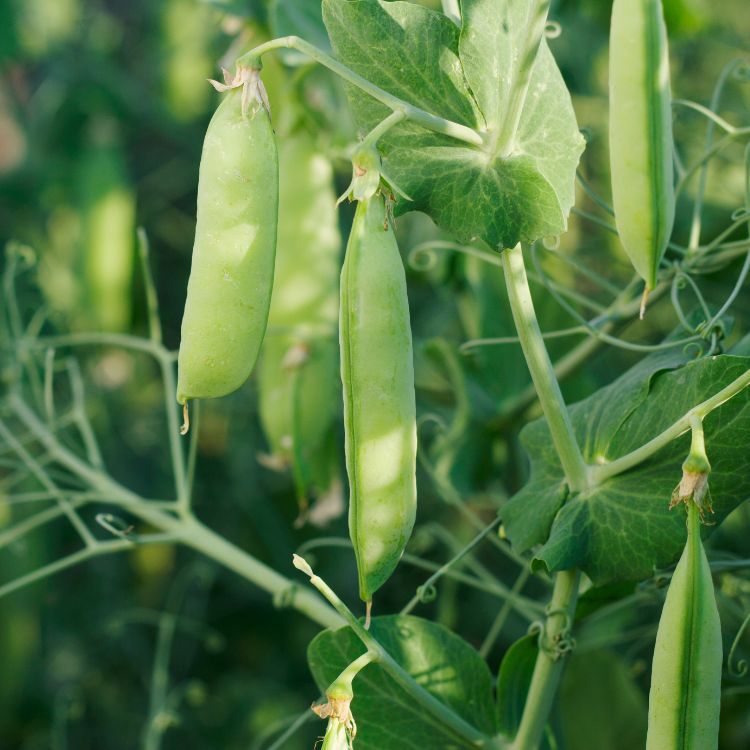
Article-at-a-Glance
Discover the best pea varieties for container gardening and their unique benefits.
Learn how to select the ideal container size and material for growing peas.
Understand the importance of the right soil mix and sun exposure for pea plants.
Get step-by-step instructions for planting and caring for your container peas.
Explore advanced tips for maximizing your pea harvest and incorporating them into a survival garden.
Setting the Stage for Succulent Peas in Pots
When space is at a premium, growing peas in containers is a smart move. Not only do they adapt well to confined spaces, but they also offer a delightful harvest that can be just a few steps away from your kitchen. Let’s dive into the world of container peas and see how you can reap the benefits of fresh, home-grown pods.
Why Container Peas Fit Your Urban Garden
For those with limited space or an urban setting, container gardening offers a flexible and practical solution. Peas are particularly well-suited to this method because they have shallow root systems and can thrive even on a balcony or patio. Besides that, their vertical growth habit means you can grow more in less space by simply training them upwards.
Varieties Best Suited for Containers
Choosing the right pea variety is crucial for container success. Here are some excellent choices:
‘Sugar Ann’ – A snap pea known for its sweetness and early harvest.
‘Little Marvel’ – A compact plant with a high yield of tender peas.
‘Oregon Sugar Pod II’ – A disease-resistant snow pea variety that produces large, sweet pods.
Choosing Your Champion Containers
When it comes to containers, peas aren’t too picky, but they do have some preferences. The right container can make a significant difference in the health and yield of your plants.
Size and Depth Considerations
Peas need room for their roots to spread out, so opt for a container that’s at least 10-12 inches deep. As for width, a 12-inch diameter pot can support about 3-4 pea plants. Remember, peas like to keep their feet cool, so a larger container can help regulate soil temperature.
Material Matters: Which is Best for Peas?
Material choice can affect the soil’s temperature and moisture retention. Here’s a quick comparison:
Plastic – Lightweight and retains moisture well, but can heat up quickly in direct sunlight.
Clay or Terracotta – Porous, allowing soil to breathe and water to evaporate, which keeps roots cooler.
Fabric – Excellent aeration and drainage; prevents root circling and is great for peas’ root health.
Most importantly, whatever container you choose, ensure it has adequate drainage holes to prevent waterlogging.
Soil and Sun: The Dynamic Duo for Thriving Peas
Peas aren’t just about the container; they’re also about what’s inside and where they sit. Getting the soil mix right and placing your pots in the best spot are key to your pea plants’ success.
Mixing the Perfect Pea Potting Medium
Peas prefer a well-draining soil that’s rich in organic matter. A good mix could be:
2 parts potting soil
1 part compost
1 part perlite or vermiculite for extra drainage
This blend provides the nutrients and drainage that peas need to flourish.
Location, Location, Location: Where to Place Your Pots
Peas love the sun but can tolerate partial shade. Aim for about 6-8 hours of sunlight daily. If you’re in a particularly hot climate, some afternoon shade can help prevent overheating. Therefore, positioning is everything; find a sunny spot that’s shielded from the hottest part of the day.
The Planting Process: From Seed to Sprout
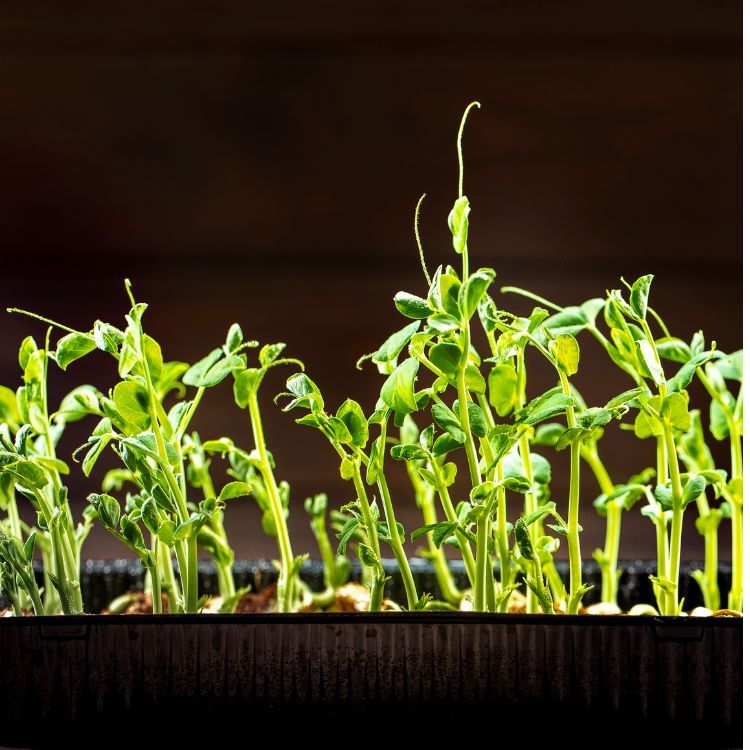
Now that you’ve got the right container, soil, and spot, it’s time to plant your peas. The process is straightforward, but attention to detail can improve germination rates and plant health.
Pre-Soaking Strategies for Speedy Germination
Soak your pea seeds in water for 12-24 hours before planting. This softens the seed coat and speeds up germination. Just be sure not to soak them too long, as they can rot. After soaking, drain the seeds and get ready to plant.
Spatial Configuration: How Many Seeds Per Pot?
When sowing pea seeds, spacing is key. Plant them about 1 inch deep and 2 inches apart. If you’re using a larger container, you can space them slightly further apart, but generally, peas don’t mind being close to their neighbors. This close planting also helps them support each other as they grow.
Germinating Genius: Caring for Your Climbing Companions
After you’ve nestled your pea seeds into their soil beds, the real magic begins. Germination is a critical phase, and your care during this time sets the stage for the entire growth cycle. A consistent watering schedule, along with monitoring for pests and diseases, ensures your pea plants start strong.
Water Wisdom: Keeping Peas Happy and Hydrated
Peas need to stay moist, especially during germination and early growth. Water them gently to avoid disturbing the seeds, and aim to keep the soil consistently damp but not soggy. As they grow, deep watering encourages deeper root development, which is essential for stability and nutrient uptake.
Remember, overwatering can be just as detrimental as under-watering. Check the top inch of the soil before watering—if it’s dry, it’s time to water. If it’s still moist, hold off for another day.
Support Systems: Giving Peas a Place to Climb
As climbers, peas need a support system to thrive. This can be as simple as a trellis or a few bamboo stakes. Install your support system at planting time to avoid disturbing the roots later on. The tendrils of pea plants will naturally grasp and climb, but you might need to guide them initially. Secure the vines loosely to the support with soft ties to encourage upward growth.
Survival Garden: Why Peas are the Perfect Choice
When planning a survival garden, peas are an ideal choice. They’re not only nutritious but also easy to grow and preserve. In survival scenarios, having a reliable source of protein is crucial, and peas can be that source.
Peas as a Protein Powerhouse in Survival Scenarios
Peas are rich in protein, fiber, and vitamins, making them a valuable addition to any survival garden. They can be eaten fresh, dried, or frozen, providing versatility in storage and preparation. In times of need, your pea plants can offer sustenance and a sense of security.
Storing and Preserving Peas for Year-Round Enjoyment
Did you know? Dried peas can last for years when stored properly, making them an excellent resource for long-term food security.
For storage, you can:
Freeze shelled peas to enjoy their fresh taste throughout the year.
Dry peas completely and store them in airtight containers for future planting or as a pantry staple.
Pickle peas for a tangy treat that also extends their shelf life.
Harvesting Hints: When to Pick Your Perfect Peas
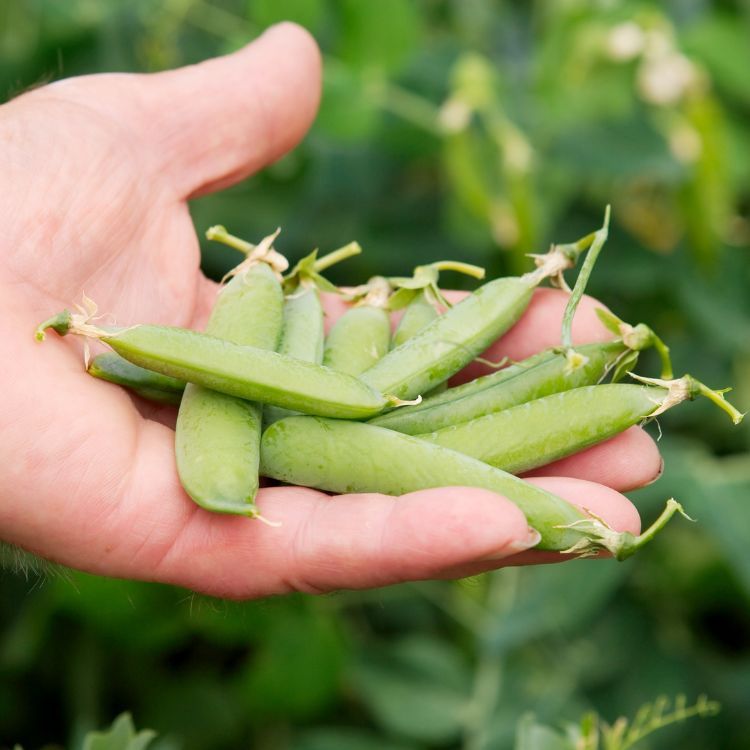
The moment of truth for any gardener is harvest time. Knowing when to harvest your peas can make the difference between a good crop and a great one. Pay close attention to the signs of ripeness to determine the perfect picking time.
Signs of Ripress for Different Varieties
Each pea variety has its own cues for ripeness:
Snap peas should be plump with a crisp pod.
Snow peas are best harvested when the pods are still flat and the peas inside are barely visible.
Shell peas need to be full-sized, but not bulging, for the sweetest flavor.
Most importantly, taste a pea before full-scale harvesting. The flavor will tell you if they’re ready better than any visual cue.
Harvest Techniques to Avoid Damaging Plants
When harvesting, support the vine with one hand while you pick with the other to avoid pulling on the plant. Snip or pinch off the pods carefully to keep the plant healthy for more production. Regular harvesting encourages the plants to produce more pods, so don’t be shy—pick those peas!
Harvest time is a gardener’s delight, and when it comes to peas, timing is everything. The tenderness and sweetness of the pea are at their peak just before the pods mature fully. To ensure you’re picking peas at the perfect moment, look for pods that are swollen but not yet bulging with the outline of the peas visible. This is especially true for snap and snow peas, where the entire pod is consumed. For shelling peas, wait until the pods are plump and the peas inside have developed a bright green color.
Harvest Techniques to Avoid Damaging Plants
To harvest your peas without harming the plant, use one hand to hold the vine and the other to gently pull or snip the pod at the stem. A clean cut will prevent damage to the plant and encourage further production. Regular harvesting not only provides you with a continuous bounty but also stimulates the plant to produce more pods. Therefore, don’t hesitate to harvest as soon as the peas are ripe.
Now, let’s talk about how to keep those pea plants producing even more. With a little know-how, you can extend your harvest throughout the growing season.
Amplify Your Harvest: Advanced Tips for Prolific Peas
Maximizing your pea yield goes beyond proper planting and care. With these advanced strategies, you can ensure a bountiful harvest that lasts.
Succession Sowing: Keeping the Harvest Going
Succession sowing is a technique where you plant new seeds at intervals throughout the growing season. This ensures a continuous supply of peas as each batch matures at a different time. Start by planting your first batch of peas, and then sow new seeds every two weeks. Keep in mind the growing conditions and adjust your sowing schedule accordingly to avoid the hottest part of the summer.
Companion Planting to Boost Pea Performance
Companion planting is the practice of growing different plants together for mutual benefit. Peas, being legumes, fix nitrogen in the soil, which can be beneficial for many other plants. Here are a few companions that can help your peas thrive:
Carrots – Their roots help to loosen the soil, allowing better aeration for pea roots.
Spinach – A great companion for providing ground cover to keep the soil moist.
Radishes – They mature quickly and can be harvested before the peas need more space.
By choosing the right companions, you can create a symbiotic environment that enhances growth and productivity.
Frequently Asked Questions
As you embark on your pea-planting journey, you might have a few questions. Let’s address some common queries to help you grow the best peas possible.
Can I Grow Peas in a Container Without a Trellis?
Yes, you can grow bush varieties of peas that do not require a trellis. However, even bush peas can benefit from some support to keep the pods off the ground and reduce the risk of disease. If you choose a climbing variety, a trellis or some type of support is necessary for the vines to latch onto as they grow.
What is the Lifespan of a Container Pea Plant?
Peas are generally grown as annuals, meaning they complete their life cycle in one growing season. Once they have produced seeds (the peas), the plants will start to decline. With proper care, you can expect pea plants to produce for several weeks before they need to be replaced. For more information on maximizing your yield in a limited space, check out these compact fruit trees for your survival garden.
How Often Should I Water My Container Peas?
Container peas need consistent moisture to thrive, especially during germination and flowering. Water them when the top inch of soil feels dry to the touch. During hot weather, they may need water daily. It’s best to water early in the morning or late in the afternoon to reduce evaporation.
Peas are also quite hardy and can tolerate a light frost. In fact, they prefer cooler weather and can be one of the first vegetables planted in the spring. If a heavy frost is expected, it’s wise to provide some protection, such as a row cover, to keep your plants safe.
Can Container Peas Survive Frost?
Yes, peas are frost-hardy and can survive light frosts without much trouble. However, if a severe frost is forecasted, it’s best to protect your plants with a cover overnight. Young seedlings are more vulnerable to frost damage, so take extra care with them.
When’s the Best Time to Start Container Peas Outdoors?
The best time to start planting peas is as soon as the soil can be worked in the spring, which is often several weeks before the last frost date. Peas can germinate in soil temperatures as low as 40°F (4°C), but the ideal soil temperature for germination is between 50°F and 60°F (10°C to 15°C). In cooler climates, you can also plant a second crop in late summer for a fall harvest.




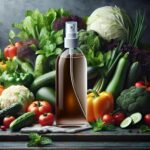
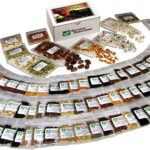

Leave a Reply